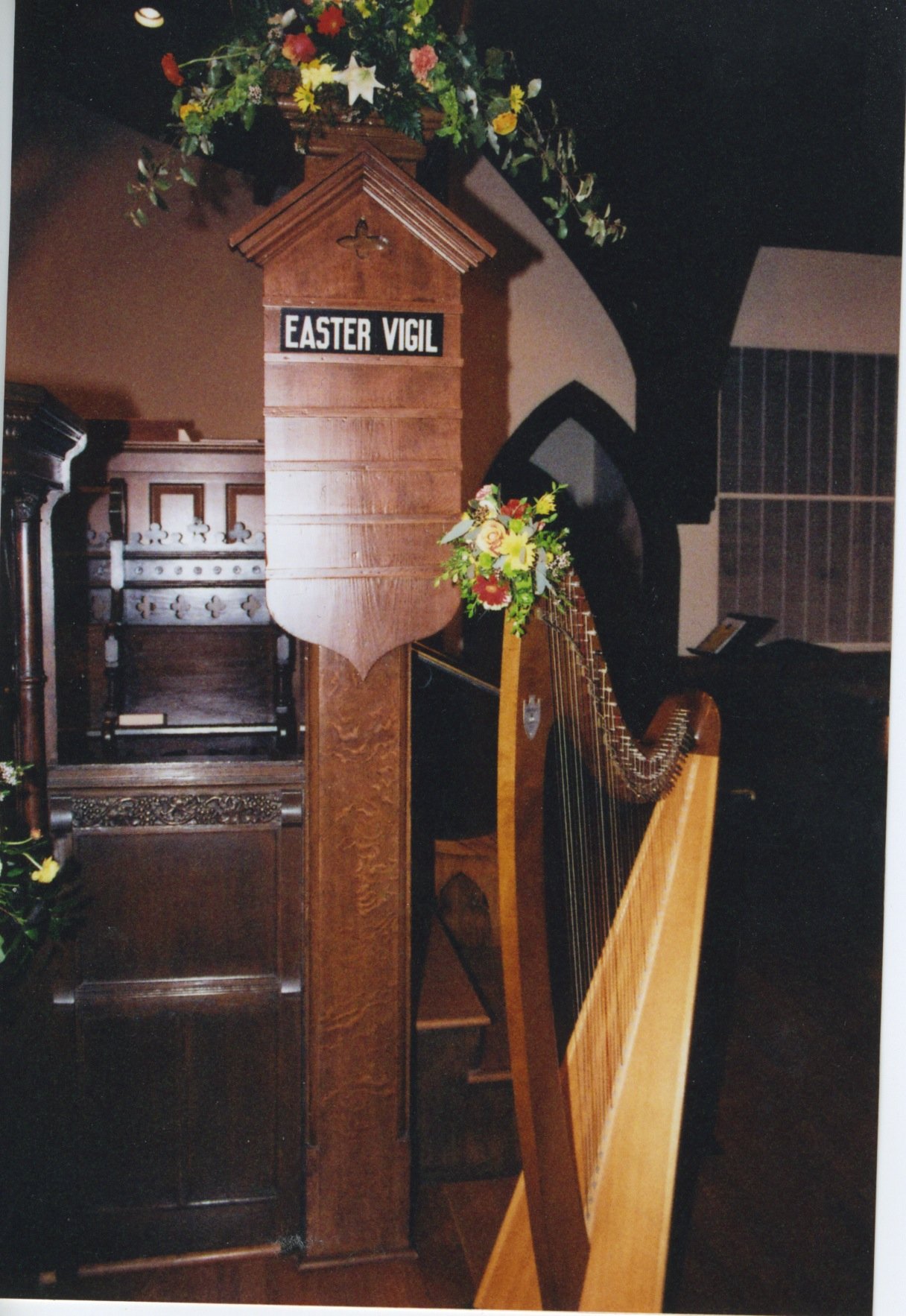A Memory Book of Past Easter Vigils
“How blessed is this night when earth and heaven are joined, and man is reconciled to God.” —Book of Common Prayer (Church Publishing 1979) p. 287.
I revisit this past Holy Week and remember especially some beautiful stories of the excitement of the Easter Vigil at each church where I served. I remember one priest telling us at his homily many years ago that our presence at the Vigil didn’t give us extra points with God. We weren’t getting more stars in our crown for being there. Being among the first ones at the empty tomb was a privilege to meet the risen Lord.
One of my favorite surprises was waiting to see how the Altar Guild would decorate my larger harp for the Easter Vigil.
Many congregations then follow the Vigil service with an elaborate reception or dinner late at night at church or someone’s home.
Once at Trinity Cathedral, as the deacon tilted the candle ever so slightly to light its wick from the first fire, oil ran out of the top of the candle, and the fire became surreal, like the tongues of fire described at Pentecost. At St. Margaret’s, we did the Vigil in the Columbarium garden, and I played a smaller lap harp as I chanted the Exsultet to stay on key. I cannot describe the exhilaration of shouting in the great outdoors, “The Lord has risen indeed!”
At St. Luke’s, a lector reading one of the Old Testament Lessons had difficulty seeing in the dark. In the middle of the long reading, my dear friend put her candle closer to the microphone at the lectern, catching the microphone’s foam covering on fire. She so elegantly promptly blew out the fire and didn’t miss a beat in the reading.
Also, at St. Luke’s, one of the fantastic teachers of the children’s ministries and her two children planned a flashlight egg hunt for older children after the Vigil. The young people searched outside around the church, which was a huge success and increased the number of people who came to the service!
If you look online at a virtual Vigil during the pandemic at St. Mark’s Episcopal Church, the Easter fire looks like it is coming out of the air! Spectacular!
It is now more contained but still very moving.
We recently handed out bells for people to ring during the Great Alleluia. At the end of the service, our other deacon, Susan, and our associate priest, Patricia, spontaneously began ringing their bells whenever there was an Alleluia at the closing hymn, “Christ the Lord is Risen Today, Alleluia.” The congregation soon joined in ringing their bells. It was incredibly moving, since we could not sing because of COVID restrictions, but we could ring!
The Vigil is so unusual that it is easy for clergy to get caught up in the many tiny details of this once-a-year liturgy and view it as a performance rather than an offering. The Vigil is a service to be enjoyed and celebrated.
We can always count on the Vigil to bring surprises, as it did this year and the first Easter.
Joanna. joannaseibet@me.com






